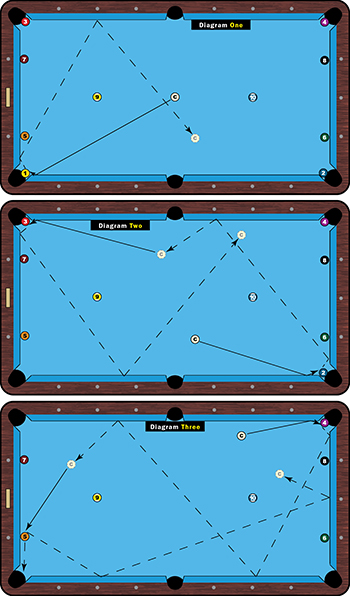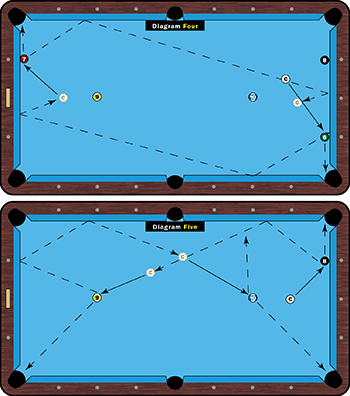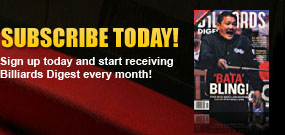Playing position off of balls hanging in a pocket is tricky business.
Hereís a drill that will surprise you. It will frustrate you as well.
One of the most common mistakes I see in pool, particularly watching amateurs, is how they play shots when the object ball is deep in the pocket shelf, especially when that ball is in one side of the pocket. Playing position from cinch shots like this, particularly if you have to run the cue ball up or down the table, always seems to trip players up.
This drill will help you learn how to play these shots the right way. Itís a deceiving drill and one Iíve slipped up on many times. The object ball isnít the challenge, obviously. The challenge comes with cue ball speed and landing on the right side of the next ball.
And once you get to the 5 ball, you need to reset your focus. If you take the rest of the balls for granted, youíll make a mistake. And thatís really frustrating at that juncture.
The rules are simple: On shots 1-4, the cue ball must hit the rail first. Youíre going two or three rails for position on these shots. On shots 5-10, no rules expect that you canít disturb an object ball other than the one youíre shooting. Begin with the cue ball in the position shown in Diagram One.

Here is my favorite way to play this drill:
For starters, in playing shape on the four corner balls, you want to get as close as you can to the long rail that leads to the pocket of the next object ball.
Starting with the cue ball in the center of the table, use high right English and aim about a half-ball width up the rail on the 1 ball. No need to hit this too hard. The cue ball will do all the work.
(The reason you want to go rail-first on these shots is to maintain more control over the cue ball. I see so many amateurs try to hit the ball thin and have the cue ball hit the point on the opposite side of the pocket. At that point you have no idea where the cue ball is going, and youíre likely to miss position.)
Switch to high left English on the 2 ball, coming just off the third rail for the 3 ball. (Diagram Two)

Same shot (high left), aiming about a ballís width up the rail, swinging the cue ball across the table and back along the long rail leading to the 4 ball.
Youíve got a ways to go to get the proper angle on the 5 ball, so extreme English (a good two tips of right) to come around for the 5. This, of course, depends on your position on the 4 ball. If youíre really close to the rail, you can play bottom right and a bit more power.
If you land on the 5 as shown in Diagram Three, use high left to come down the long rail to the short rail. (If your angle on the 5 is a little steeper, use high right to come across the table to the opposite long rail. Itís a safer option.
Once you get to the 6 ball, there is plenty of space near the opposite short rail with the 5 now gone. Same going for the 6 to the 7. High ball with a tip of English works for both of these shots.





